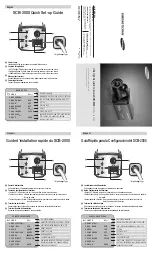
16
TippingPoint 10 Overview
Hardware Installation and Configuration
Prior to installation, you should also obtain the
TippingPoint Command Line Interface Reference
. After
installation of the components, you will need to run through the TippingPoint Setup Wizard as part of the
installation and configuration procedures.
This chapter includes the following sections:
•
•
•
Install the Chassis
The TippingPoint 10 can be placed on a shelf or table on rubber feet, attached to a wall, or mounted in a
rack.
CAUTION:
The TippingPoint 10 is greater than 1 RU in height and requires 3" (7.62 cm) overhead
clearance and 0.31" (8 mm) side clearance. Do not stack devices. If the devices are stacked, the cooling
features of the devices will be compromised. This may lead to reliability problems or device failure.
Attaching Rubber Feet to the Chassis
The TippingPoint 10 comes with four rubber feet that can be attached to the unit. These feet should be
detached from the square and attached to the base of the unit in the places marked by the etched circles.
The device can then be placed on a shelf or on a table.
NOTE:
The rubber feet should
not
be used with the wall mount or rack mount kits.
Using the TippingPoint 10 Wall and Rack Mount Kit
You can order an accessory kit for the TippingPoint 10 that enables you to mount the device on the wall or
on a rack. The accessory kit includes:
•
A mounting plate that is attached to the TippingPoint 10 and can then be attached to the wall.
•
A pair of rack ears that attach to a server rack, on which the TippingPoint 10 and mounting plate can
be placed.
NOTE:
To use the rack ears, the TippingPoint 10 must be installed on the mounting plate first.
















































